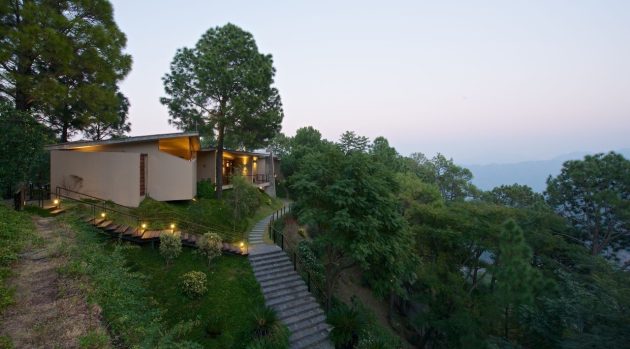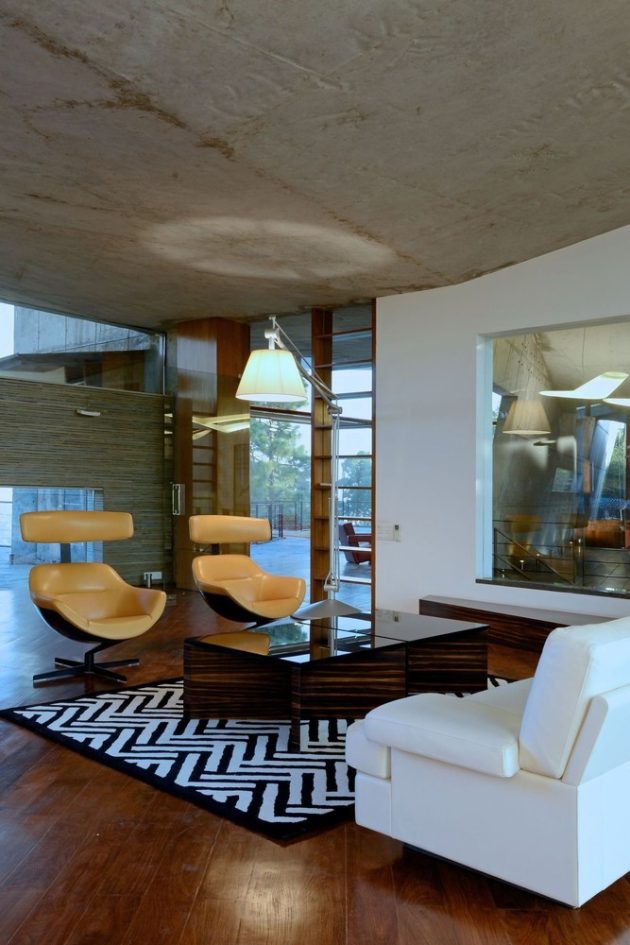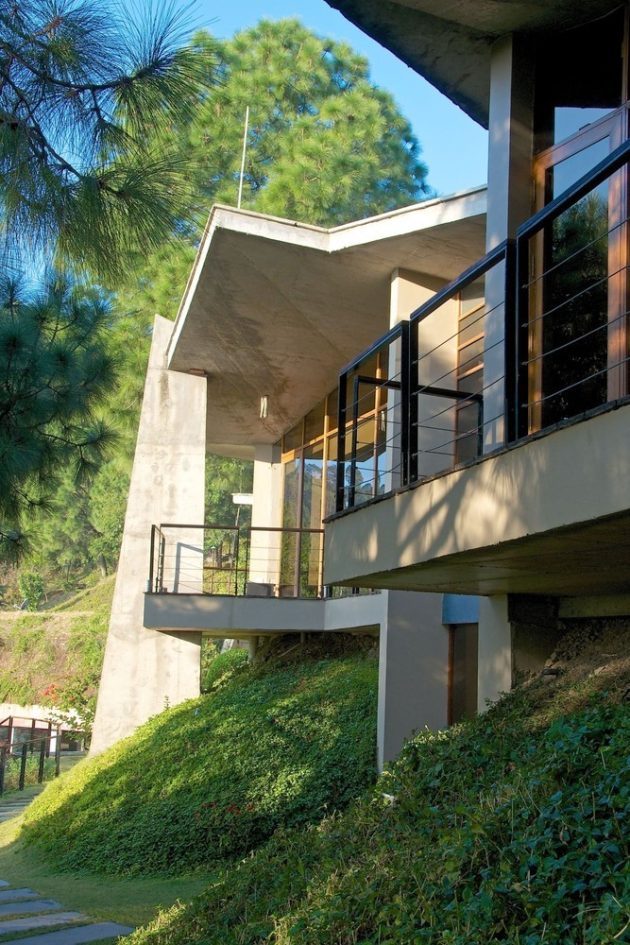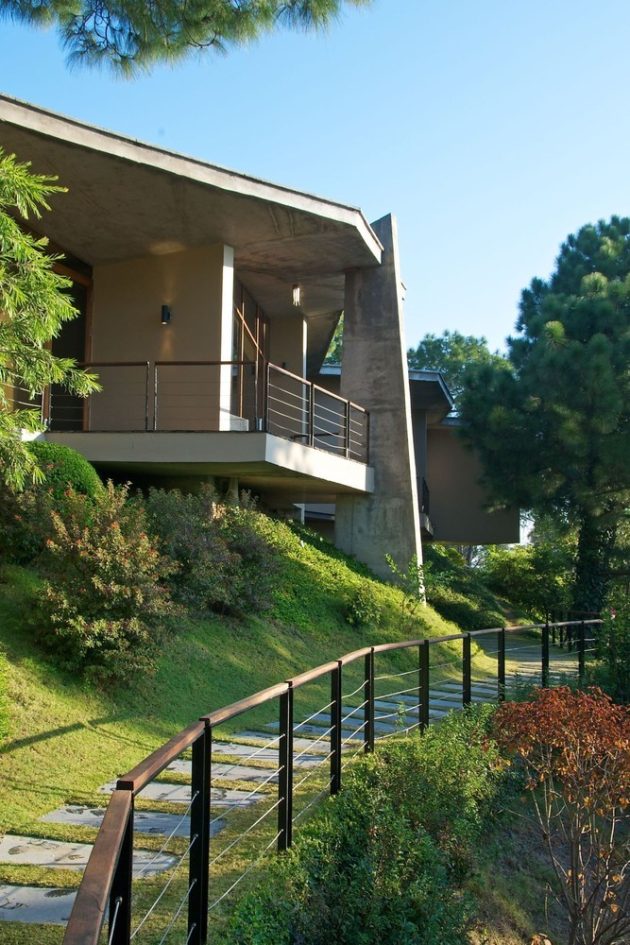The project: A house in the Himalayas
Architects: Rajeev Saini
Location: Kasauli, India
photos by: Sebastian Zacharias
Himalayan House by Rajeev Saini
Rajeev Saini was commissioned to design a holiday home on a privately owned hill in the Himalayan ranges. The project aims to build a 4 bedroom house of 8000 square feet in an environmentally sensitive area. Their solution was to divide the building into two wings, which were offset by a level to create a balcony and tuck into a cave-like parking lot.
We’ve already featured some of their other projects, so if you’re a fan of this studio’s work, make sure you check out Poona House in Mumbai and their Rishikesh House projects.

The clients (who are even more friends now, having worked on multiple projects together over the years) approached us to build them a holiday home that they could enjoy with friends over long weekends, away from Delhi, where they used to live. The site is a privately owned hill, nestled amid the Himalayan ranges near the camp town of Kasauli, which is a two-hour drive from the northern city of Chandigarh (designed by Corbusier).
The hill is a narrow linear stretch of land (about 5 acres) running from north to south, with a road winding about its foot on three sides. Not wanting to see the sight of a fleet of cars (which usually accompany a holiday entourage) around the house, we took a motorway up the hill to about three-quarters of the climb, where we laid out a cave like parking lot in the hill. From here one can either take the wooden stairs, or the open hydraulic platform lift (a privilege for elderly parents who use the house equally in the sweltering Delhi summer) which takes one to the cantilevered wooden walkway bridge leading to the front door.

Working on a very limited amount of flat land to build on, the challenge was to create a 4 bedroom home for a client they would like to be spread across 8,000 square feet of built up area. We obviously did not want a two-storey structure to appear in this pristine natural setting, so we focused on the idea of creating a wing that ran along the east hill, and a wing that ran the length of the west, offset by a level, so that the roof of the west wing would become a terraced deck for the upper east wing. A small area of overlap between the two volumes allows for a staircase to facilitate vertical movement between the two floors. As a result, you drive around the hill first and encounter the houses that once jutted out of the upper eastern volumes, and only as you turn around the northern end does the lower western side become visible, reading as one story again. The geometry of the inclined concrete levels capped with an origami-like concrete ceiling (inspired by the ubiquitous mountain ranges) defines the upper volume which flanks the entrance foyer, two bedrooms to the north of the entrance and the living room, kitchen, staff and utility room south of the entrance.
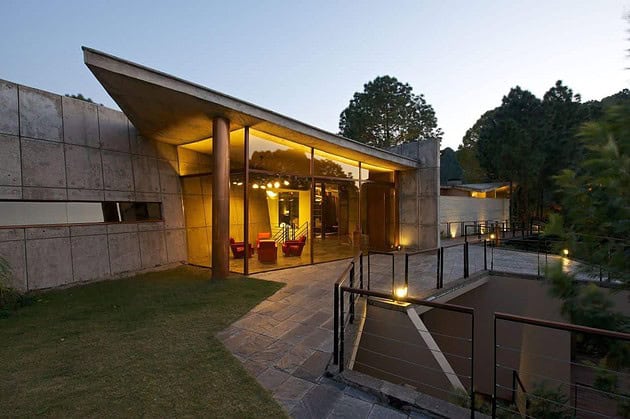
In the lower west volume there are two bedrooms, a multimedia room, storerooms and a small massage and steam room. The bedrooms and bathrooms in each wing are arranged as a series of independent volumes projecting from the hillside, all opening onto wooden decks.
Teak has been used for flooring throughout the rooms while local Indian gray slates line the roofs of the interstitial circulation walkways, continuing with the gray of exposed concrete ceilings and walls. A centrally located free standing fireplace with brass chimney defines the living space from the dining area. Similar copper pipes have also been used to channel rainwater elsewhere, when negative roof slopes cause water to pool in central areas.
A large cantilevered wooden viewing deck has been erected, two steps from the house, providing stunning views of the snow-capped peaks at the northernmost end of the hill.
– Rajeev Saini









